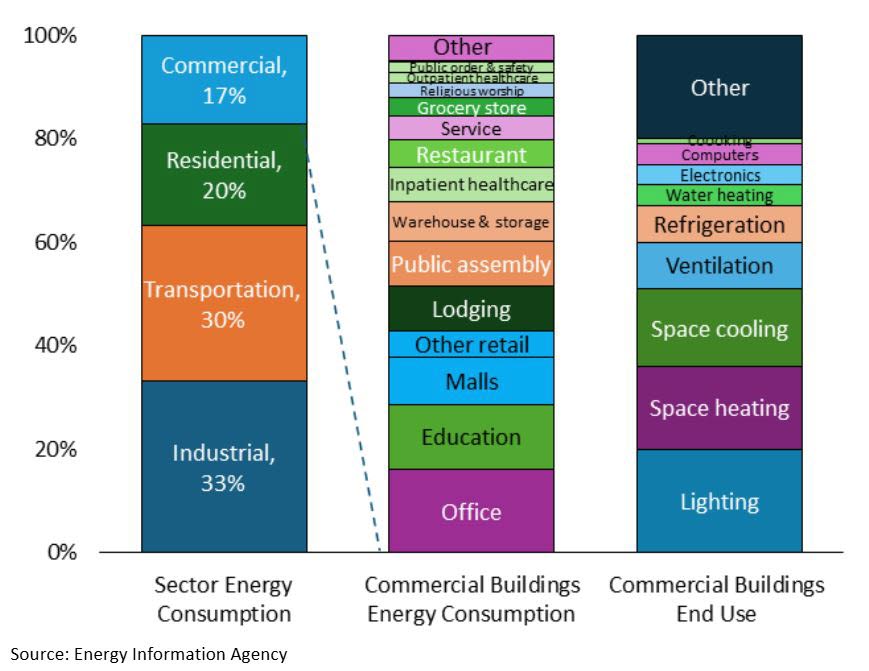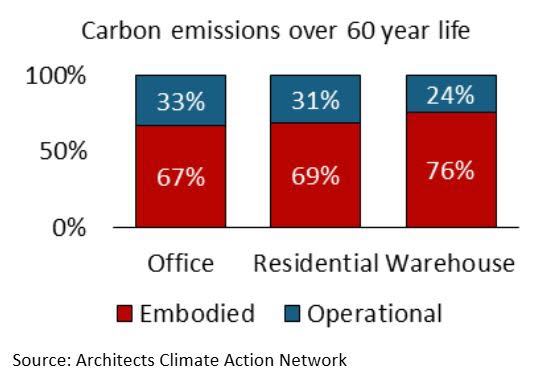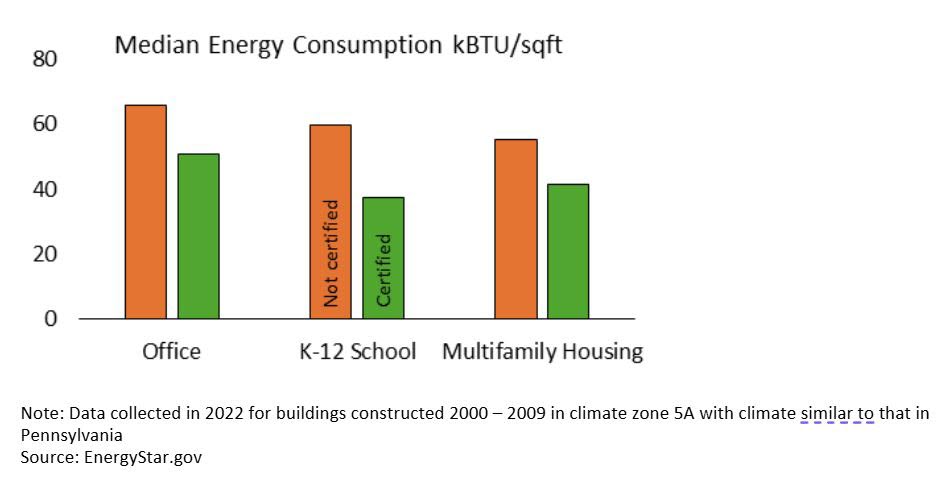Sustainability in Real Estate: How Green Buildings Can Save You Money
By: Sanjay Guglani – Chief Strategy Officer, High Company LLC
The energy consumption landscape in the United States reveals that commercial real estate buildings play a pivotal role, accounting for 17 percent of total energy usage. Office spaces, educational institutions, retail establishments, and hotels collectively consume half of this energy. The substantial energy requirements for lighting, heating, and cooling highlight the opportunity to address this significant energy footprint. This direct energy used in day-to-day operations is called “operational energy”.


Sustainability in real estate development must also consider that commercial buildings are indirect users of energy. That happens when trees are cut and processed to make lumber; when ores are mined (or scrap metal is used) and converted to steel, aluminum, or copper; when cement and glass are manufactured; and when all these materials are transported to a construction site. The energy that goes into manufacturing materials, transporting them, and erecting a building is called “embodied energy.” Embodied energy is about two-thirds of the total energy consumed by a building over its life cycle. Cement, steel, lumber, and insulation are the materials with the highest embodied energy.
Green Building Strategies: Reducing Embodied Energy in Real Estate
When embarking on a building project, the first consideration should be whether new construction is needed at all. The embodied energy impact of redeveloping an existing structure is 50 to 75 percent lower than that of constructing a new building. Even if the foundation and structure are the only elements retained, their reuse will significantly impact the embodied energy of the project. These components generally account for a majority of a building’s carbon footprint — a central concern in environmental issues in real estate.
If redeveloping an existing building is not a viable option, incorporating recycled materials into the design will help reduce embodied energy. A study from RMI (formerly called Rocky Mountain Institute) claims it is possible to achieve a 19–46% reduction in embodied energy for new construction with minimal increase in the cost of materials — reinforcing real estate sustainability trends in 2025.
Sustainable Commercial Real Estate: Improving Operational Efficiency
There are several actions building owners can take to reduce operational energy consumption and support sustainable real estate investment strategies.
- Reduce waste. The Environmental Protection Agency (EPA) estimates that 30 percent of energy used in commercial buildings is wasted. Examples of waste reduction efforts include sealing of air leaks and the use of occupancy sensors to operate lights and HVAC.
- Use higher efficiency lighting, HVAC, elevators, and other large consumers of energy. Energy Star is a voluntary program administered by the EPA. Energy Star-certified buildings have been verified to perform among the top 25 percent of similar buildings nationwide and claim to save 35 percent of energy.
A General Services Administration study claims that green buildings also enjoy up to 10 percent higher occupancy and up to 16 percent rental premiums — making them attractive for both tenants and investors.
Read more about AI in Real Estate: Trends, Uses & Future of the Industry
The win-win of Profitability and Responsibility
The journey towards environmental sustainability in the real estate industry necessitates a multidimensional approach, encompassing both operational energy efficiency and the reduction of embodied energy. By adopting these sustainability in commercial real estate practices, building owners can significantly lower their environmental impact.
As proven by Energy Star-certified and other high-performance buildings, investing in green building trends not only benefits the environment but also leads to higher property values and returns — a key insight for anyone pursuing sustainable real estate investment.
Need help designing or redeveloping energy-efficient commercial spaces? Greenfield Architects specializes in sustainable building design and adaptive reuse projects that balance performance with environmental impact.

Sustainability in Real Estate: FAQs
1. What does sustainability mean in real estate?
Sustainability in real estate refers to designing, building, and managing properties in ways that reduce environmental impact — from minimizing energy use to choosing sustainable materials.
2. What are the benefits of green buildings in commercial real estate?
Green buildings save energy, reduce operating costs, improve occupancy rates, and command higher rental premiums — all while helping the environment.
3. How does sustainability affect real estate investment?
Investors are increasingly favoring sustainable real estate projects due to lower risk, compliance with ESG standards, and stronger long-term returns.
4. What are some current real estate sustainability trends?
Popular trends include retrofitting older buildings, using recycled materials, adopting smart building technology, and pursuing green certifications like LEED or Energy Star.
